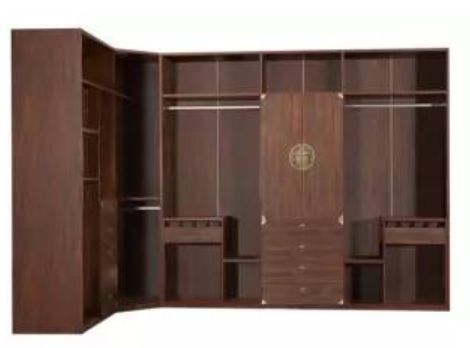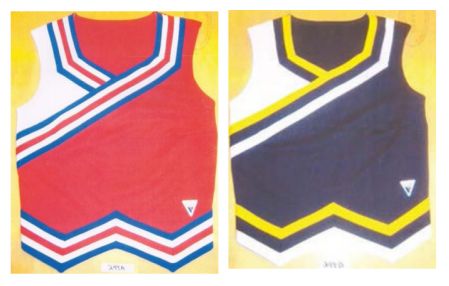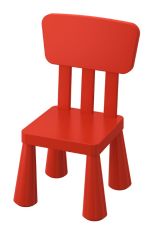Overview
Many of our clients have unique product designs that enable them to stay on top of the market and achieve huge commercial success. However, while enjoying the fruits of their creativity, they are also tasting the bitter part of success-they are highly plagued by various copycats in the industry who produce "look-alike" version of product designs with only minor changes and then steal away market shares and customers.
Under the current IP laws and anti-unfair competition laws of China, product designers/creators might, according to the specific circumstances, choose to protect their product design via design patent if their design has not been commercialized so as to lose novelty, or 3D trademark if they are able to prove the distinctiveness of a 3D shape and overcome the functionality obstacle.1 The other alternative is that product designers/creators might choose to initiate a lawsuit against the copycats under unfair competition claims if hopefully they have not so many targets in the market to bring to court and would be able to prove the following elements, i.e., i. the product is a commodity with certain influence in the market; ii. the product has a unique external design, as opposed to general packaging or decoration for products in the same industry; and iii. the use of such design by any adverse party would be sufficient to cause the consumers' confusion.
This article, however, will focus on the possible protection of product designs, aka Works of Applied Art, under the Copyright Law and in judicial practices in China, which in the author's opinion is still a topic full of paradox and ambiguity and therefore requires clarification and sorting out.
What Does the Law Say?
The concept of Works of Applied Art was first introduced by the Berne Convention for the Protection of Literary and Artistic Works (hereinafter "Berne Convention") which provides under Article 2 that, the expression 'literary and artistic works' shall include every production in the literary, scientific and artistic domain, whatever may be the mode or form of its expression, such as books, pamphlets and other writings; lectures, addresses, sermons and other works of the same nature; dramatic or dramatic-musical works; choreographic works and entertainments in dumb show; musical compositions with or without words; cinematographic works to which are assimilated works expressed by a process analogous to cinematography; works of drawing, painting, architecture, sculpture, engraving and lithography; photographic works to which are assimilated works expressed by a process analogous to photography; works of applied art; illustrations, maps, plans, sketches and three-dimensional works relative to geography, topography, architecture or science.2
As regards the term of protection, Berne Convention provides under Article 7(4) that, it shall be a matter for legislation in the countries of the Union to determine the term of protection of photographic works and that of works of applied art in so far as they are protected as artistic works; however, this term shall last at least until the end of a period of twenty-five years from the making of such a work.3
Designers or creators might awkwardly find that Works of Applied Art have not been listed as a category of works under the current China Copyright Law (revised on November 11, 2020). Article 3 of China Copyright Law provides, for the purpose of this Law, the term 'works' refers to intellectual achievements in the fields of literature, art and science that are original and can be expressed in certain forms, including:
- written works;
- oral works;
- works of music, drama, folk art, dance or acrobatic art;
- works of fine art and architecture;
- photographic works;
- audio-visual works;
- engineering design drawings, product design drawings, maps, schematics and other graphic works and model works;
- computer software;
- Other intellectual achievements conforming to the characteristics of the works.4
The above being the case, to meet the basic requirements for the protection of Works of Applied Art under the Berne Convention, it is provided in Article 6 of the Provisions on the implementation of International Copyright Treaties formulated by the State Council in 1992 that "for foreign works of applied art, the term of protection shall be 25 years commencing from the creation of the works. The preceding paragraph, however, shall not apply to the works of fine art, (including designs of cartoon characters), used in industrial goods".5 Accordingly, foreign nationals' Works of Applied Art, excluding the works of fine art used in industrial goods, are eligible for copyright protection in China.
How about the Chinese nationals' Works of Applied Art? What kind of works constitute copyrightable Works of Applied Art? Since the law does not provide a clear answer, the author shall search the judicial opinions for it.
Guiding Case of China Supreme Court
In one of its IP guiding cases issued on July 15, 2021, the China Supreme People's Court (hereinafter the "SPC") ruled in favor of a Chinese furniture designer/creator seeking copyright protection for the design of one of its furniture sets (see Pic.1).

(Pic.1:Sample of the furniture set6 seeking copyright
protection as Work of Applied Art)
At the judgement7issued for this case, the SPC handed down the following opinions that would have a profound influence for many other designers/creators seeking copyright protection for their Works of Applied Art:
- In China's current judicial practices, Works of Applied Art are protectable by Copyright Law as a type of works of fine art;
- Chinese copyright law protects the original expression of the author in the work, but not the thoughts reflected in the work itself. Works of Applied Art are both practical and artistic. The practical function belongs to the category of thoughts and should not be protected by the Copyright Law. As a Work of Applied Art, only its artistic quality is protected, that is, the original artistic shape or artistic pattern on the Work of Applied Art, or in other words, the structure or form of the work of art;
- Works of Applied Art, as works of art protected by copyright law, shall not only meet the general constitutive elements of works and the special constitutive conditions of works of fine art, but also meet the conditions that their practicality and artistry can be separated from each other: a) the two can be physically separated from each other, that is, the practicability with practical function and the artistry reflecting artistic beauty can be physically separated and exist separately; and b) the two concepts can be separated from each other, that is, changing the artistry in the applied works of art will not lead to the loss of the essence of the actual functionality; and
- In the cases where their practicality and artistry cannot be separated, applied works of art cannot be protected by Copyright Law.
Discussion
1. Physical and Conceptual Separability
From SPC's above guiding case, it is crystal clear that in order to be copyrightable, the artistic design elements must be separable from the practicality of the works seeking copyright protection. In the SPC's reasoning, two types of separability should be both considered and evaluated: physical separability and conceptual separability. While physical separability is a concept relatively easy to digest, the conceptual separability is more abstract and difficult to apply. In this regard, the judicial opinions in the US might shed some lights:
In the US, the judges in the Supreme Court ruled in Star Athletica v. Varsity Brands8 that copyright law can protect designs on cheerleading uniforms (see Pic.2). The Court set a clear, single test for copyrightability, resolving a split among various courts:
"A feature incorporated into the design of a useful article is eligible for copyright protection only if the feature (1) can be perceived as a two-or three-dimensional work of art separate from the useful article and (2) would qualify as a protectable pictorial, graphic, or sculptural work-either on its own or fixed in some other tangible medium of expression-if it were imagined separately from the useful article into which it is incorporated."9

(Pic.2: Two of the designs10 at issue in the Star
Athletica case)
2. Measure of Creativity
Under the current prevailing standards, the standard of creativity for copyright protection remains relatively low. To be copyrightable, a work needs only be 'original,' that is, independently made and creative11. However, what should be the level of creativity a Work of Applied Art must embody to warrant copyright protection?
According to Professor Wang Qian, one of the most renowned professors in the IP Law sector in China, for a Work of Applied Art to be qualified for copyright protection, it should reach a relatively high level of artistic creation. Articles for daily use all have their aesthetic appeal to some extent. Imposing a too low standard for the height of artistic creation would render the design system rather empty or meaningless, and exceed the domain of works of fine art.12
Professor Wang Qian's position is concurred by many courts in China. For example, in the case of copyright dispute involving children's chair and stool (see Pic.3) between Inter Ikea Systems B.V. and Taizhou Zhongtian Plastic Co., LTD, the court held that the conditions for the protection of Works of Applied Art should be examined from the aspects of originality of the works' ideas and expressions, and whether the applied works involved have the artistic height that fine art works should have in the aesthetic sense. In this case, the children's chair and stool involved could not be distinguished from other children's chairs and benches in terms of design idea and overall appearance. They were not highly original and did not have the artistic height that works of art should have, so they could not be protected by the Copyright Law.13

(Pic.3: Sample of the 'MAMMUT' chair14 at issue
in the Inter Ikea case)
Conclusion
Measured against these standards we discussed in this article, in order for a Work of Applied Art to be copyrightable,the artistic design elements must be separable from the practicality of the works seeking copyright protection, and the artistic part should reach a relatively high level of artistic creation.
Regarding the test of conceptual separability, the Chinese judiciary prefers the approach of examining if change of the design of the artistic part of a useful article would have any impact on realization of the utilitarian function, while the US judiciary would examine when the 'stripped' aesthetic part is to be placed on other tangible medium of expression, whether it could form a painting, graphic or sculpture that is protected by copyright law.
With regard to the measure of creativity, the courts in China would require a relatively high level of artistic creation. However, as it is known to all, the same piece of art might mean different things to different people. Who should be the qualified evaluator to examine the level of artistic creation in a Work of Applied Art? When the judge is forced to be placed in an uncomfortable position to act like an art critic, it would inevitably result in inconsistent judgements and uncertainty for designers/creators who are seeking justice for their creations.
Footnotes
1. See the author's another article (co-authored with Mr. Jingzhou Tao) discussing 3D trademark registration in China, available at https://www.lexology.com/library/detail.aspx?g=e6ca934f-cc37-4165-b6a1-c70934e59cdc.
2. See Berne Convention for The Protection of Literary and Artistic Works (Paris Text 1971), available at https://www.law.cornell.edu/treaties/berne.
3. Id.
4. See http://www.gov.cn/guoqing/2021-10/29/content_5647633.htm.
5. See http://www.gov.cn/zhengce/2020-12/25/content_5574695.htm.
6. See http://www.lungtinlaw.com/article/show_article.php?id=1053%E3%80%82.
7. China Supreme People's Court: (2018) Zui Gao Fa Min Shen No.6061, Beijing Zhongrong Hengsheng Wood Industry Co., LTD. vs. Zuoshang Mingshe Household Products (Shanghai) Co., LTD, Retrial review of copyright ownership and infringement disputes and trial supervision of civil decision, December 29, 2018.
8. Star Athletica, L.L.C. v. Varsity Brands, Inc., 137 S. Ct. 1002, 1007 (2017).
9. Id.
10. See https://www.supremecourt.gov/opinions/16pdf/15-866_0971.pdf.
11. Feist Publ'ns, Inc. v. Rural Telephone Serv. Co., Inc., 499 U.S. 340, 363-364, (1991); 17 U.S.C. § 102(a).
12. Wang Qian: Copyright Law, China Renmin University Press, 2015, pp. 96-98.
13. See Inter Ikea Systems B.V. vs. Taizhou Zhongtian Plastic Co., LTD, SPC Gazette, Issue 7, 2010 (Total No. 165).
14. See https://www.ikea.cn/cn/en/p/mammut-childrens-chair-in-outdoor-red-20365367.
Originally published November 23, 2022
The content of this article is intended to provide a general guide to the subject matter. Specialist advice should be sought about your specific circumstances.
